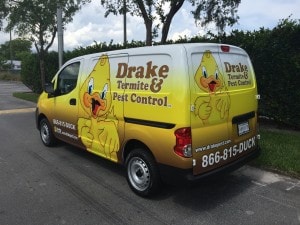A termite inspection is a targeted evaluation designed to protect your home’s structure from one of the most destructive pests in existence. Termites often operate in silence, causing severe wood damage before you’re even aware of their presence.
Skipping or delaying inspections allows these pests to compromise wooden supports, floors, and even foundations over time. If you’re unsure whether an inspection is necessary, consider this: By the time you notice visible damage, the problem is often advanced and costly. Regular professional termite inspections catch early warning signs and help prevent long-term repair costs.
The Real Purpose of a Termite Inspection
A termite inspection is not a general pest control check. It’s a specialized process that focuses solely on detecting termites and the conditions that attract them. While pest control companies may offer broad inspections, termite-specific assessments go deeper.
These termite inspections aim to detect active infestations, pinpoint structural damage, and evaluate environmental risk factors like moisture levels or wood-to-soil contact.
Termite inspectors are trained to identify not only live termite activity but also signs of past infestations. Their goal is prevention as much as detection, helping you understand how to avoid future infestations, not just solve current ones.
A Complete Breakdown of What Happens During the Inspection
Termite control and prevention are detailed; here’s a guide on termite education to help you understand better. Inspections often don’t involve tearing into your walls or floors. Every step is designed to uncover hidden termite activity while minimizing disruption to your house.
Initial Property Review: Termite inspectors assess your property’s history and structure to identify past issues and areas that may be more vulnerable to termites.
Interior Checks: Areas like basements, attics, and crawl spaces are examined for moisture and wood damage where termites commonly thrive.
Exterior Analysis: The outer perimeter is inspected for signs of termite entry points, including soil contact with wood and foundation walls vulnerabilities.
Use of Inspection Tools: Devices such as moisture meters and infrared cameras help locate hidden termite activity without disturbing your home’s surfaces.
At Drake Pest & Lawn Services, we meticulously review your home’s history and structure, thoroughly inspect both interior and exterior hotspots, and use advanced tools like moisture meters and infrared cameras to uncover hidden termite activity—without ever tearing into your walls or floors.
Signs and Evidence Termite Inspectors Look For
Knowing exactly what to look for is what separates a trained termite inspector from the average homeowner. Subtle signs often point to major potential damage hidden behind walls or beneath floors. They include:
Mud Tubes: Termite inspectors look for small, pencil-thin tunnels made of soil that subterranean termites use to travel between their nest and food sources. These tubes are often found along foundation walls, exterior walls, or in crawl spaces.
Frass (Termite Droppings): Termite droppings resemble fine, powdery sawdust and usually collect near entry points or damaged wood. Their presence signals active drywood termites inside your home.
Discarded Wings: After swarming, termites shed their termite wings, which often accumulate near windows, doors, or light fixtures. Piles of discarded wings are a strong indicator of a nearby colony.
Wood Damage: Hollow-sounding wood, blistered paint, or warped surfaces suggest termites may be feeding inside. Inspectors tap on wood and use tools to probe for internal voids.
Differentiating from Other Pests: Not all wood damage comes from termites—carpenter ants and beetles can cause similar issues. Termite inspectors are trained to spot the maze-like, layered patterns unique to wood-destroying termites.
What to Expect After the Inspection is Complete
After the termite inspection, you’ll receive a written report detailing all findings. This includes whether active infestations were detected, signs of termite damage, any existing termite damage, and recommendations for treatment or prevention.
Good reports are clear, detailed, and come with visual documentation when possible. If you’re selling your home, they eliminate the need for termite inspections when buying a home for your buyers.
The report is typically valid for the condition of the home at the time of inspection. If you’re selling or buying a house, real estate transactions often require a recent termite letter, usually no older than 30 to 90 days.
For ongoing protection, it’s recommended to schedule follow-up free termite inspections annually or biannually, depending on your risk level.
Why Skipping a Termite Inspection Can Be a Costly Mistake
Skipping a termite inspection might save you a few dollars today, but it could cost you thousands tomorrow. Termites can cause serious damage to your home’s foundation that often isn’t visible until it’s severe.
By the time you notice sagging floors or cracked door frames, termites may have already been feeding on your house for years.
Repairing termite damage can run into the tens of thousands of dollars. In contrast, a termite inspection typically costs less than $200.
Most homeowner insurance policies don’t cover termite-related repairs because they’re considered preventable. Regular free inspections demonstrate responsible maintenance and may even be required for insurance or resale.
Best Times and Frequency for Termite Inspections
How often should you get a termite inspection? Once a year is the general rule, but homeowners in high-risk regions like the Southeast or coastal California may benefit from twice-yearly checks. Spring and early summer are ideal times, as termites become more active during warmer months.
There are also specific other factors that should trigger an immediate termite control check: before major renovations, after heavy storms or flooding, and during real estate transactions. If you see signs like wood dust, termite wings, or blistering paint, don’t wait; schedule an inspection immediately to minimize risk.
How to Choose a Qualified Termite Inspection Company
The right pest control professional makes all the difference when it comes to accurate results and trustworthy recommendations. Choosing a qualified expert ensures you get a thorough termite inspection and not just a sales pitch.
Licensing and Certification: Make sure the pest control company is fully licensed and certified according to your state’s requirements. Proper credentials show they meet industry standards and follow regulated inspection procedures.
Professional Associations: Membership in organizations like the National Pest Management Association (NPMA) reflects a commitment to ongoing education and best practices. It’s a good indicator of a company’s credibility and professionalism among pest control professionals.
Transparent Reporting: A reputable company will provide a detailed written report that outlines findings, risk areas, and treatment options. Avoid pest control companies that offer vague assessments or verbal-only results.
Red Flags to Watch For: Be wary of rushed termite inspections, unclear pricing, or aggressive sales tactics for immediate treatment. These are signs of companies prioritizing profits over accuracy.
Second Opinions: You’re entitled to seek an independent termite inspection if you’re unsure about a diagnosis or recommended treatment. Honest pest control professionals will support this and answer your questions openly.
Protect Your Home with Drake Pest & Lawn Services
Don’t wait for termite damage to become visible—schedule a professional inspection with Drake Pest & Lawn Services today. Our certified experts deliver thorough, honest evaluations backed by years of experience. Safeguard your home’s structure and value with reliable protection you can trust.


